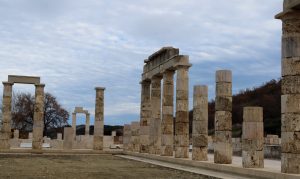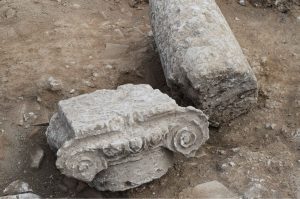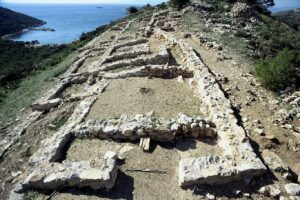A team of researchers from the University of Barcelona, collaborating with the Institute of the Ancient Near East, unveiled several rock-cut tombs in Egypt dating between the Ptolemaic period and the Roman and Byzantine eras, according to a report published in Egyptian news site Ahram Online.
According to Mostafa Waziri, an Egyptologist, and the Secretary-General of the Supreme Council of Antiquities at the Ministry of Tourism and Antiquities, the tombs, which are located at the ancient city of Oxyrhynchus, have been dated to three historical periods, the Ptolemaic (304–30 B.C.), and the Roman and Byzantine (Eastern Roman) spanning between 30 B.C to A.D. 641. Oxyrhynchus was later named Bahnasa, and is located in the Minya Governorate of Upper Egypt.
The astonishing artifacts found in the tombs included terracotta foliage-crowned statues representing the goddess Isis-Aphrodite, while some of the Roman-era mummies were fitted with gilded and colored funeral masks, with striking golden tongues placed in the mouths of two of them.
“The team discovered parts of a ruined structure adorned with captivating drawings depicting intricate details of plants, grapevines, and various animals, providing valuable insights into the daily life and cultural significance of Al Bahnasa during ancient times,” said Adel Okasah of the Middle Egypt Antiquities.
“The new discovery is shedding more light on the rich history of the region, as the team uncovered a series of rock-cut tombs dating back to both the Ptolemaic [305-30 BC] and Roman [30 BC-641 AD] periods, showcasing unique burial practices and artistic expressions of the time,” said Mostafa Waziri, the secretary general of the supreme council of antiquities (SCA).
He pointed out that one of the most remarkable findings is the discovery of terracotta statues depicting deity Isis-Aphrodite adorned with foliage crowns, representing a significant addition to the archaeological record.





